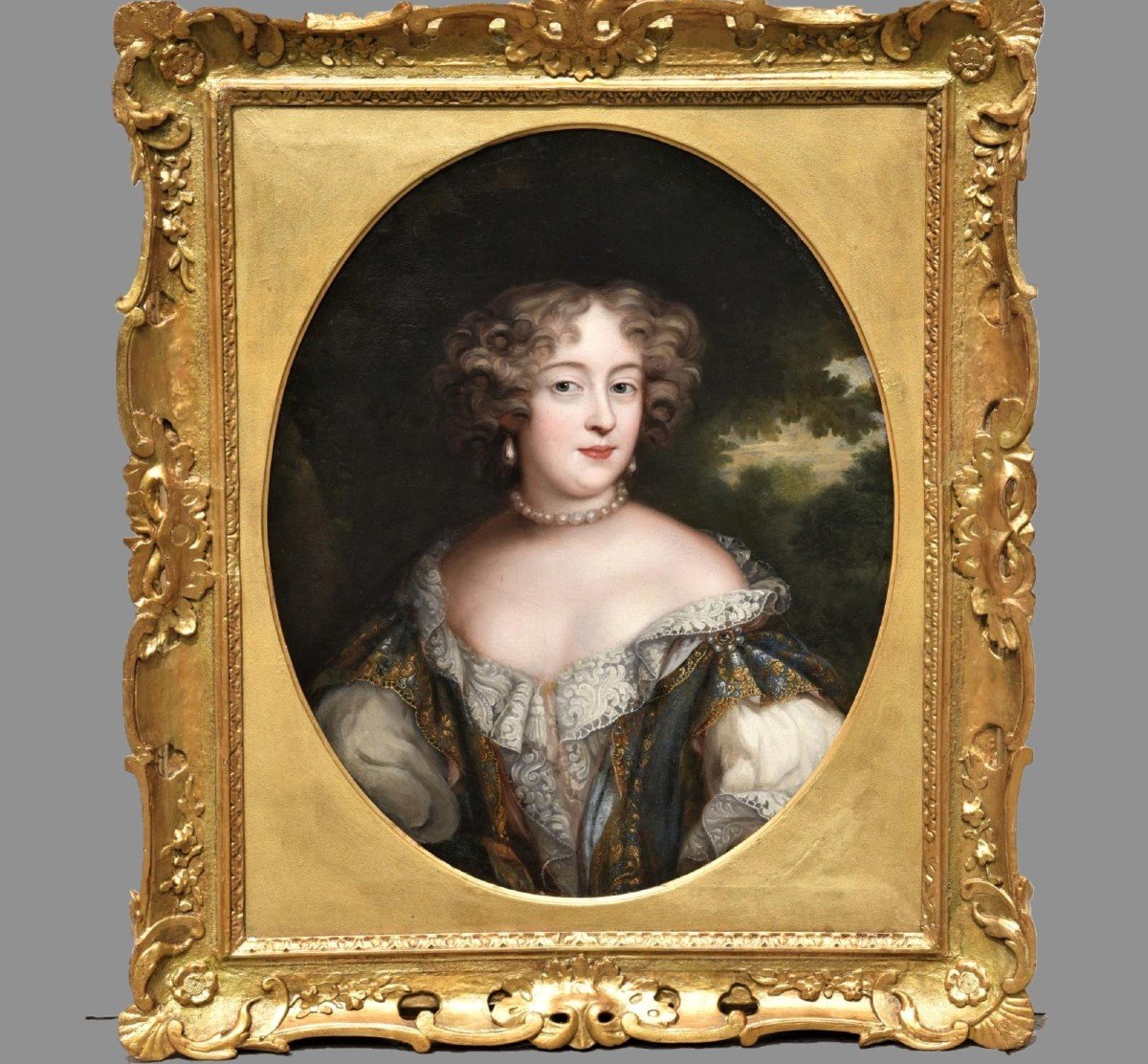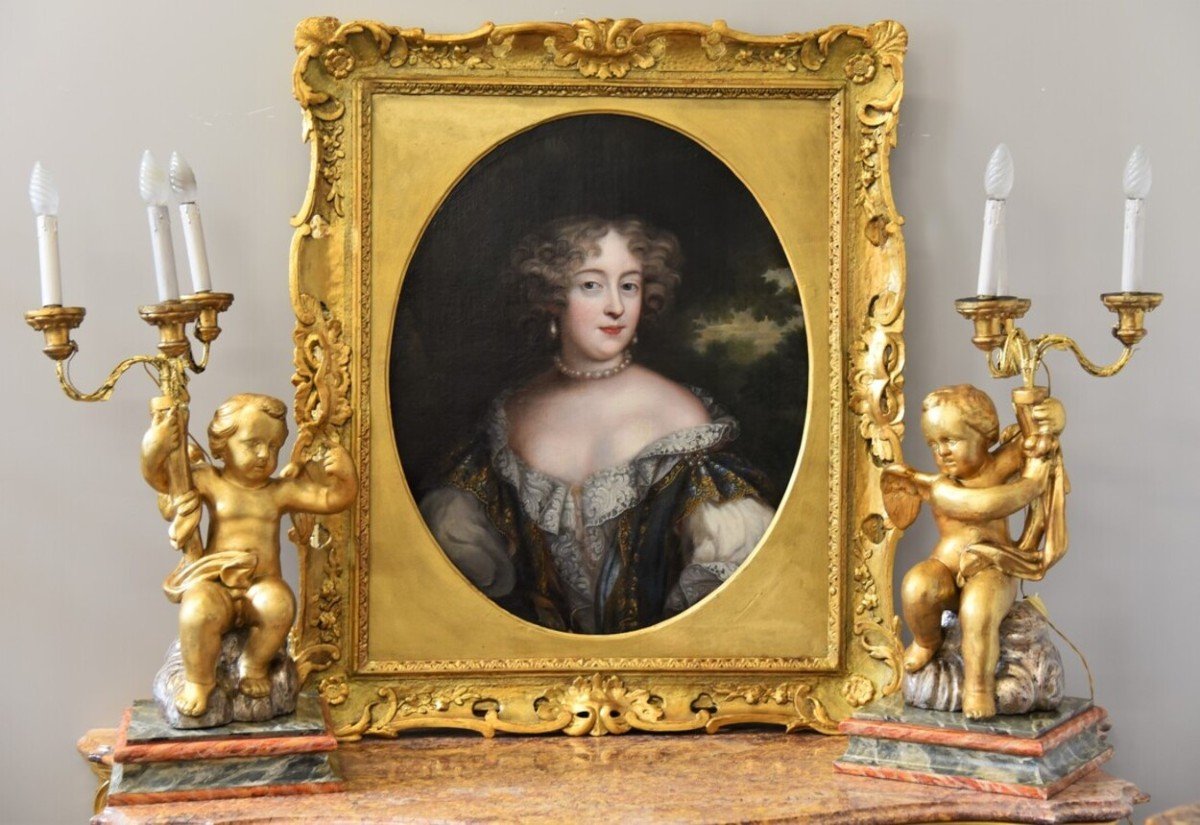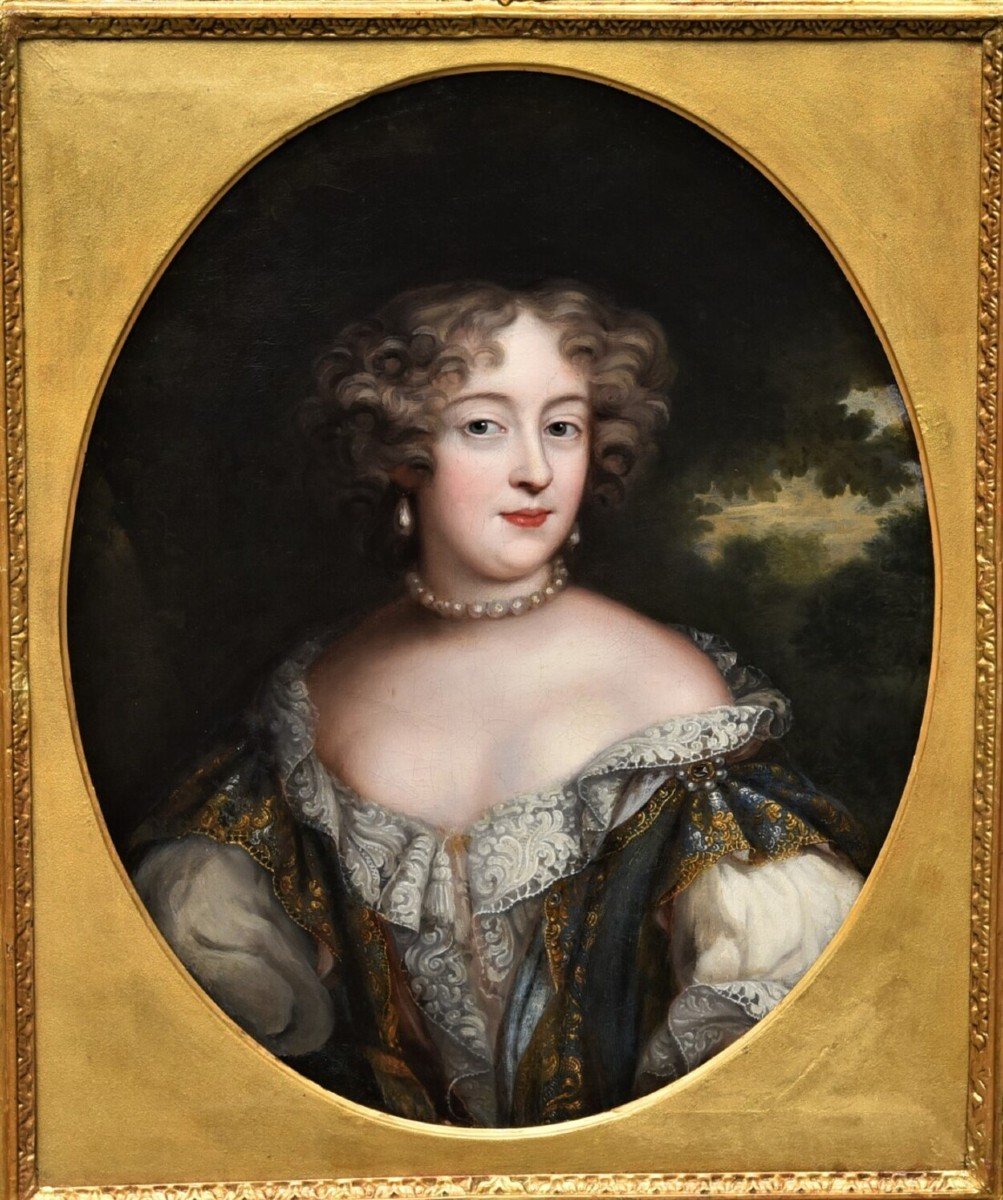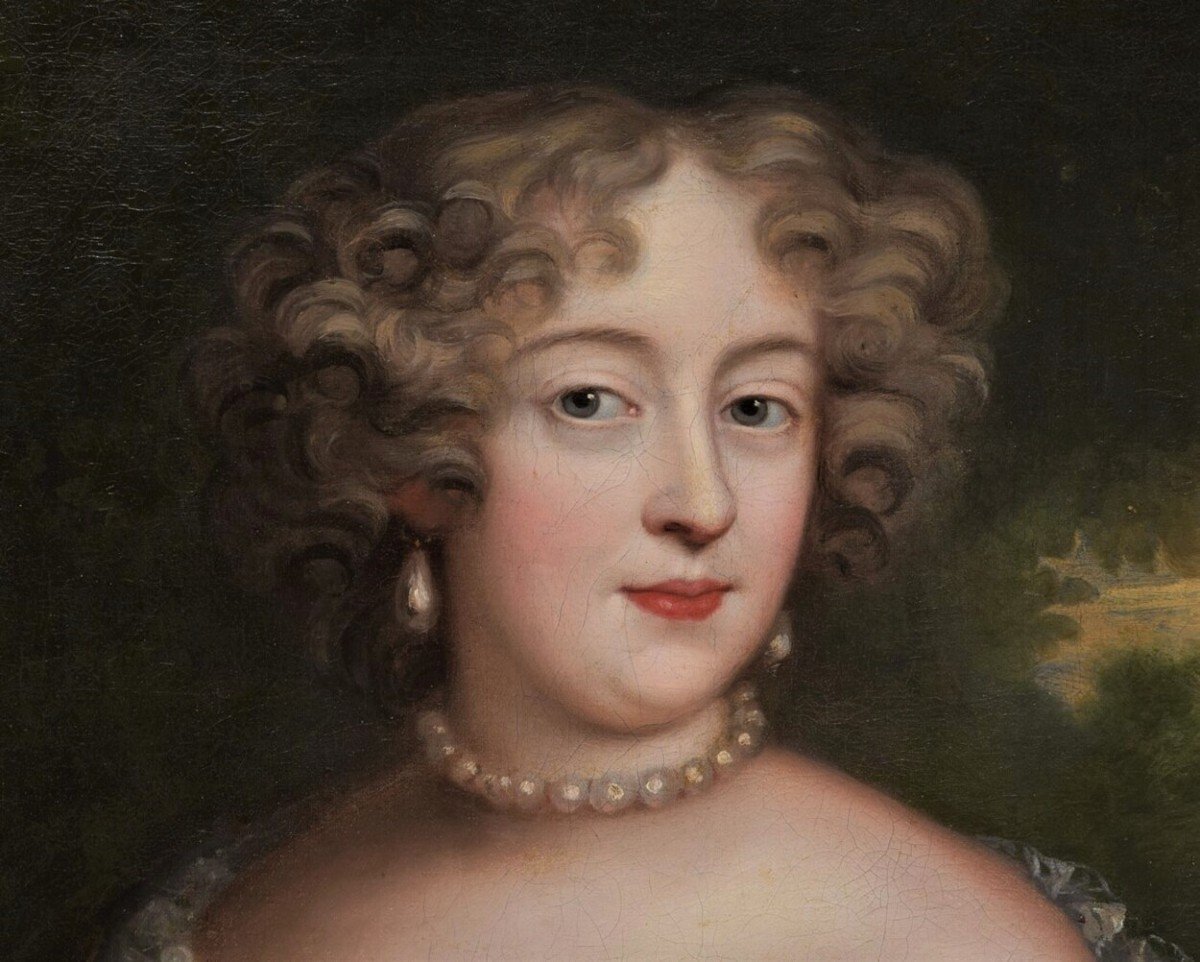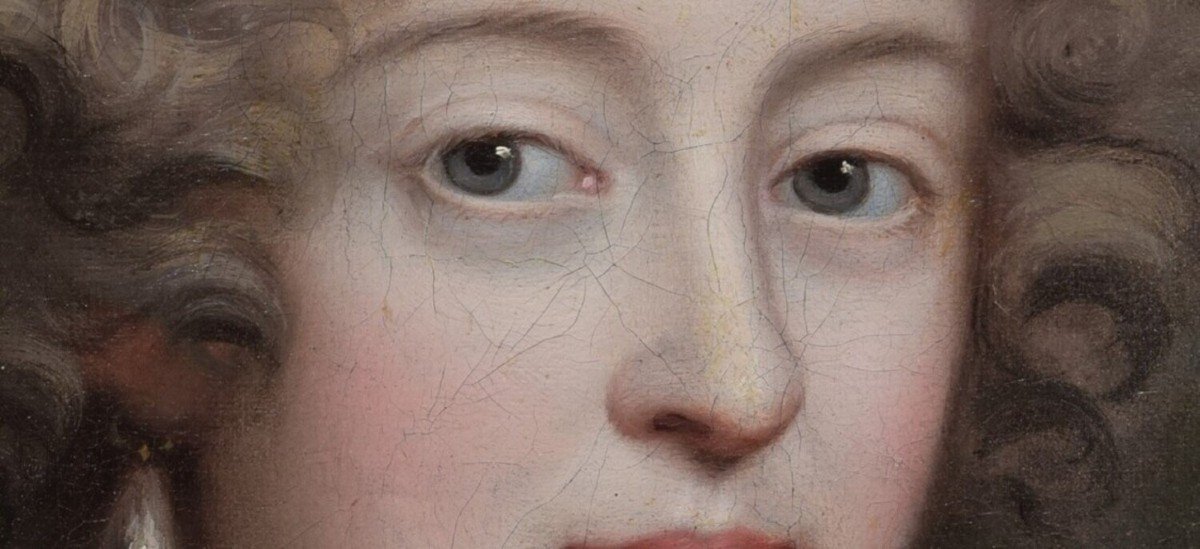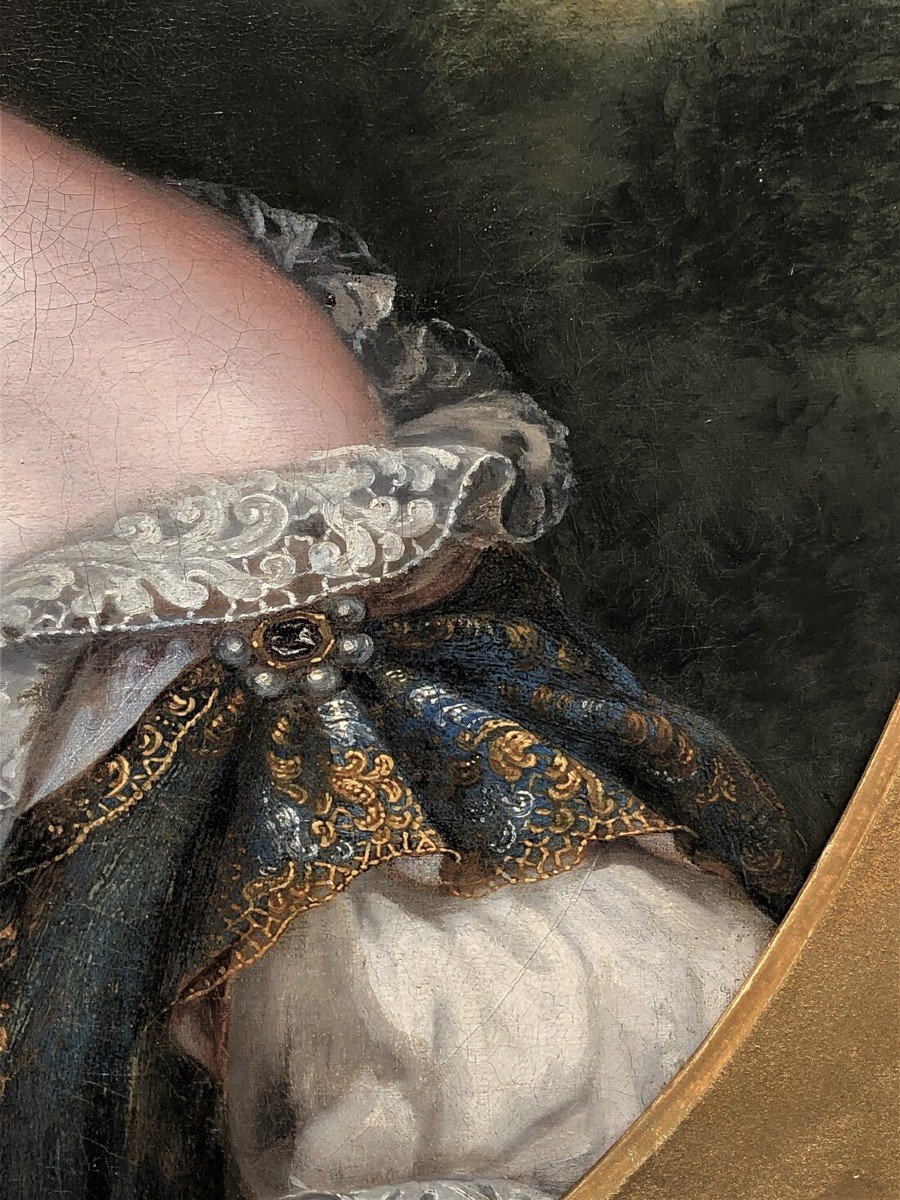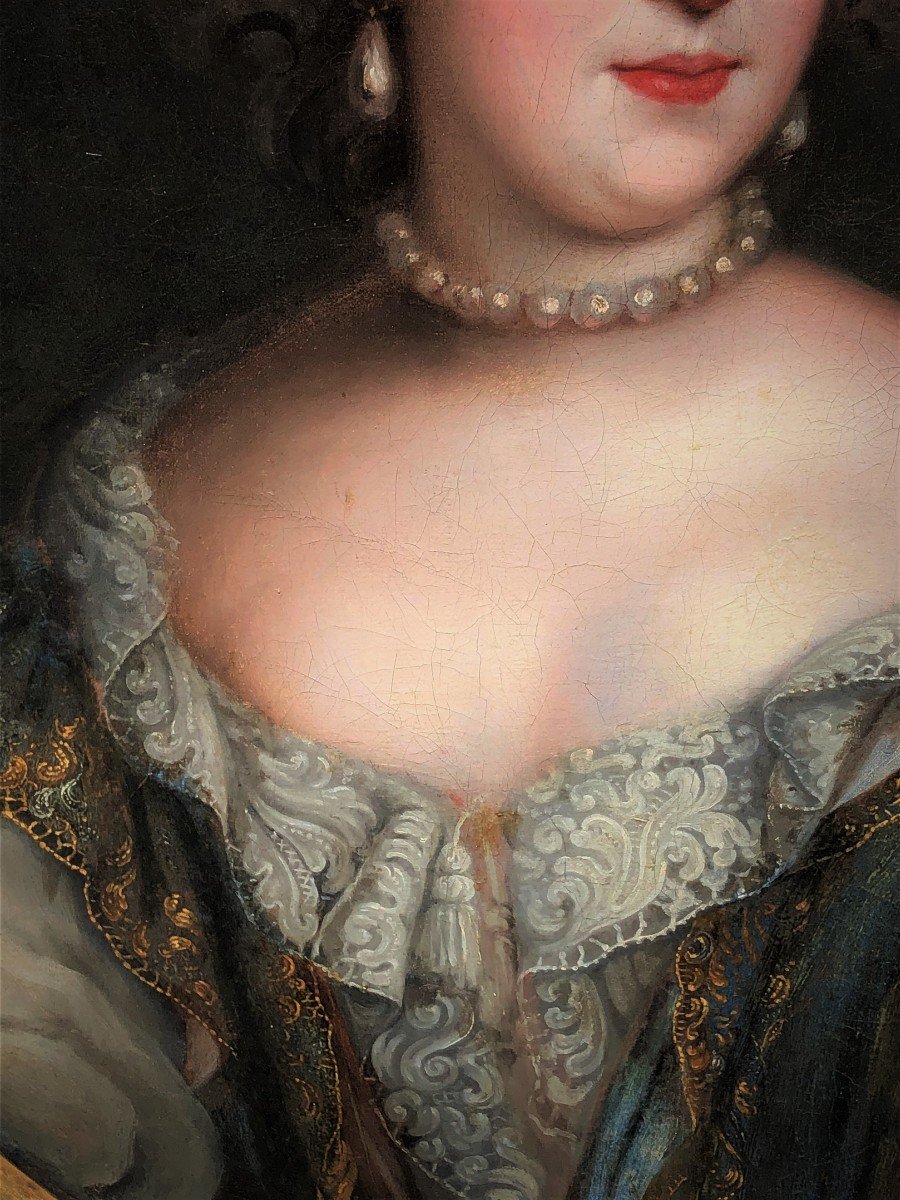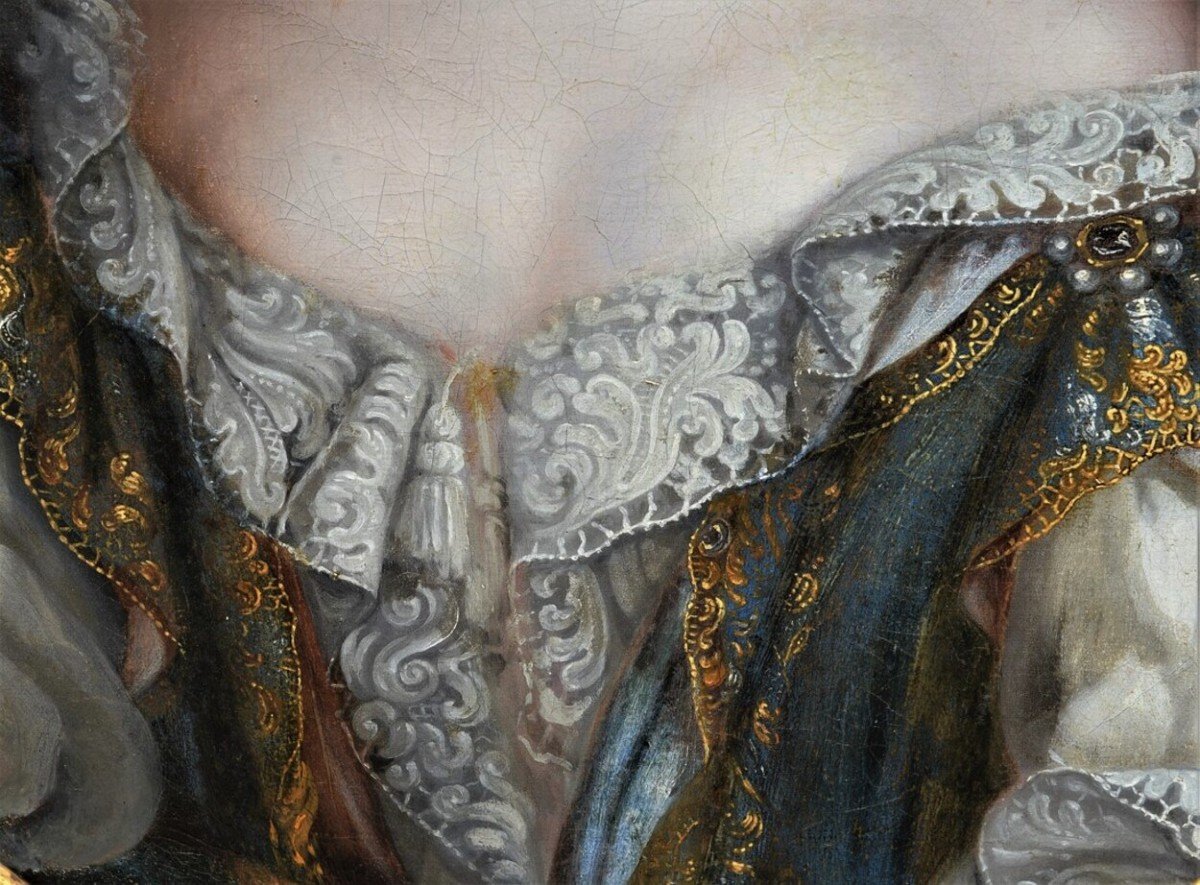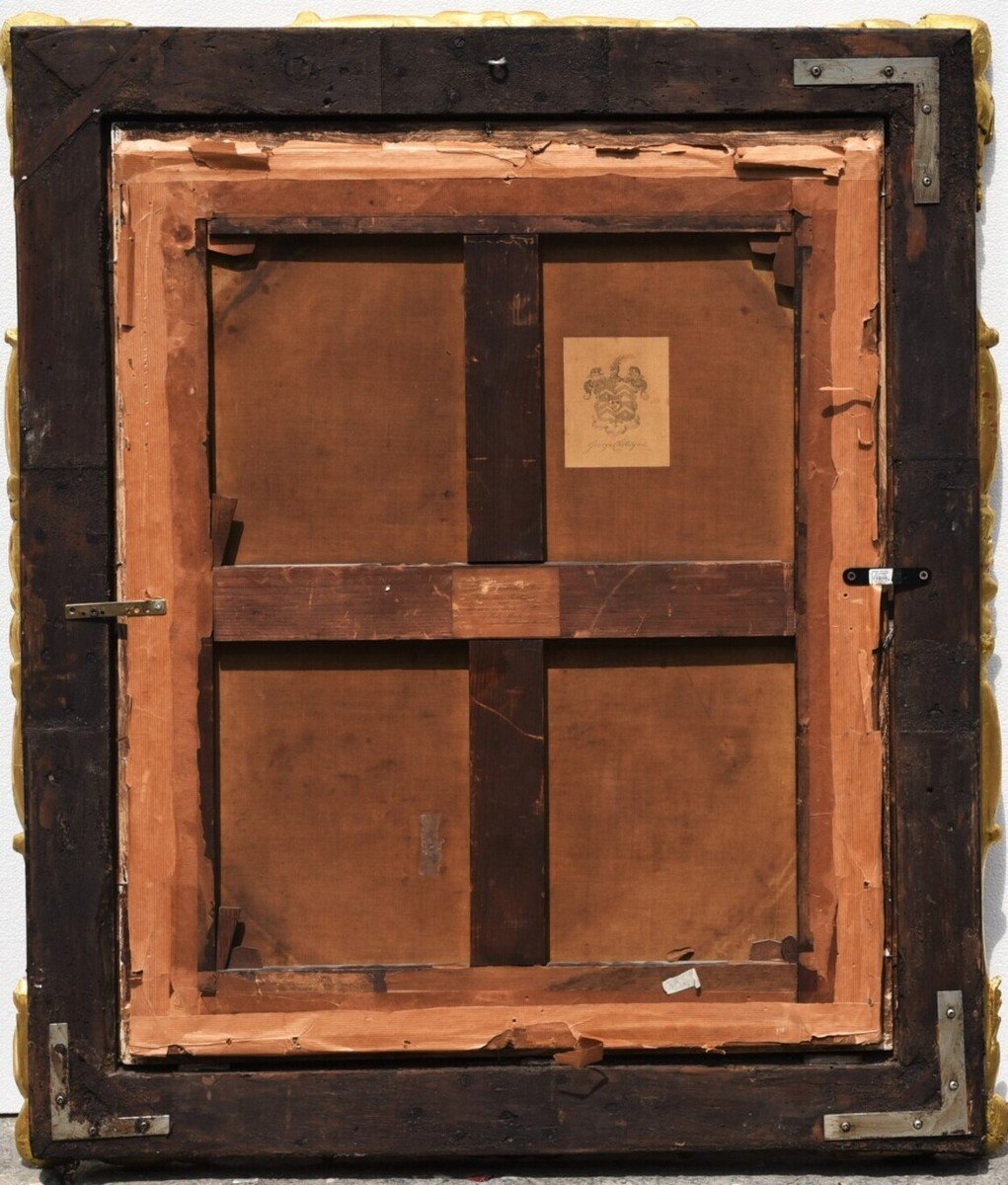"Old Table From The French School Of 1600"
Oil on canvas - Dimensions 88 X 103 cmPIERRE MIGNARD AND BOTTEGA
The painting portrays the beautiful MARIA MANCINI in a photographic manner
Anna Maria (Marie) Mancini (Rome, 28 August 1639 - Pisa, 8 May 1715) was the third of the five famous Mancini sisters; nephews of Cardinal Giulio Mazarin, were brought to France to marry advantageously. Together with the two Martinozzi cousins, the Mancini sisters were known to the court of King Louis XIV of France as the Mazarinettes.
Maria Mancini was born on August 28, 1639 and grew up in Rome. Her father was Baron Michele Lorenzo Mancini, an Italian aristocrat who was also a necromancer and astrologer, descended from a family originally from Tivoli. After her death in 1650, her mother, Geronima Mazarino, brought her and her sisters from Rome to Paris in hopes of using the influence of her brother, Cardinal Mazarin, and obtaining marriages for them. advantageous.
The other Mancini sisters were:
• Laura (1636-1657), the eldest, who married Louis of Bourbon, duc de Vendôme, the nephew of King Henry IV and her lover Gabrielle d'Estrées, and became the mother of the famous French general Louis Joseph, duc de Vendôme,
• Olimpia (1638 - 1708), who married Eugenio Maurizio di Savoia, count of Soissons and became the mother of the famous Austrian general Eugenio di Savoia,
• Ortensia (1646-1699), the beautiful of the family, she escaped from her abusive husband, Armand-Charles de la Porte, duc de La Meilleraye, and went to London, where she became the mistress of King Charles II of England.
• Maria Anna (1649 - 1714) married Godefroy Maurice de La Tour d'Auvergne, duc de Bouillon, a nephew of the famous field marshal Turenne.
The Mancinis were not the only female members of the family that Cardinal Mazarin brought to the French court. The others were Maria's first cousins, the daughters of Mazarin's elder sister. The eldest, Laura Martinozzi, married Alfonso IV d'Este, Duke of Modena and was the mother of Maria Beatrice d'Este, second wife of James II of England. The youngest, Anna Maria Martinozzi, married Armando, Prince of Conti.
Maria Mancini also had three brothers: Paul, Philippe, and Alphonse.
In France, Anna Maria's name was Frenchized to Marie. "Brunette, lively and beautiful," Maria captured the greatest prize of the French court: the romantic love of Louis XIV. According to the biography of Antonia Fraser The loves of the Sun King, a horoscope predicted that Mary would be a source of concern to Mary's mother, Geronima, and on her deathbed he asked Cardinal Mazarin to "lock Mary up forever in a convent. ".
Maria did not consummate her relationship with the Sun King. Her love for her was something idealistic, but he was so infatuated that he wanted to marry her. Finally, Cardinal Mazarin and the young king's mother, Anna of Austria, separated the couple, removing Mary in exile and arranging for Louis to marry his cousin, Maria Theresa of Spain.
In 1661 Maria was sent away to marry an Italian nobleman, Lorenzo Onofrio Colonna, who observed, after their wedding night, that he was surprised to find her still a virgin. The bridegroom did not expect to find "innocence among the loves of a sovereign.
After the birth of the third child, relations between Maria and her husband deteriorated. On May 29, 1672, fearing that her husband might want to kill her, Maria left Rome accompanied by her sister Ortensia. In 1677, in order to support herself, she wrote her memoirs of her. She did not return to Italy until her husband died in 1689.
She died in Pisa and was buried in the church of the Holy Sepulcher. She ordered that nothing be written above her grave except MARIA MANCINIA COLVMNA PVLVIS ET CINIS (Maria Mancini pillar of dust and ash)
Pierre Mignard, known as Le Romain to distinguish him from his brother Nicolas (Troyes, November 17, 1612 - Paris, May 30, 1695), was a 17th century French painter.
He was born in Troyes into a family of artists. In 1630 he left Simon Vouet's studio for Italy, where he spent twenty-two years and where he created a notable reputation, so much so that he was called to the court of Paris. Subsequently, with his portrait of the king and his definitive entry into the court, Mignard opposed Charles Le Brun, refusing to join the Academy he headed, and placing himself personally as an alternative authority.
After leaving the court due to these disputes, Mignard devoted himself to the decoration of the dome of the church of Val-de-Grâce (1664). He also carried out a long series of works and public works, the control of which was however entrusted to the Academy. This did not, however, prevent Mignard from distinguishing himself as the forefather of French Baroque portraiture.
Famous people such as Henri de Turenne, Molière, Jacques Bossuet, M.me de Maintenon, the Marquise de La Vallière, the Marquess of Sévigné, the Marquess of Montespan, Descartesas well as all the most beautiful women and the most important people, they turned to him for a portrait. His skill and his pictorial ability, accompanied by an instinct for compositional grace, were his real strength.
With the death of Le Brun in 1690, the situation changed. Mignard managed to unhinge the plans of his opponents and to return to court with all the honors that he had not previously received. However, he died in 1695, when he was about to start work on the dome of the chapel of the Hôtel des Invalides. His works are now preserved in important museums around the world, including that of the prestigious palace of Versailles. Pierre Mignard should not be confused with his nephew Pierre (1640-1725), usually known as "Pierre II" or "Le Chevalier".




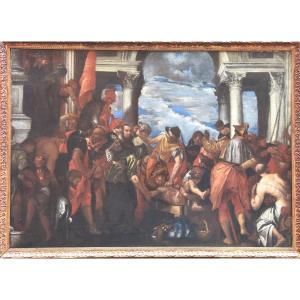

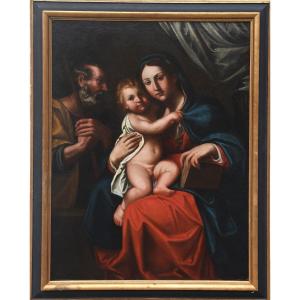

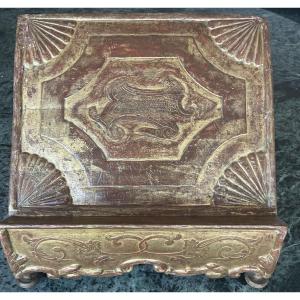

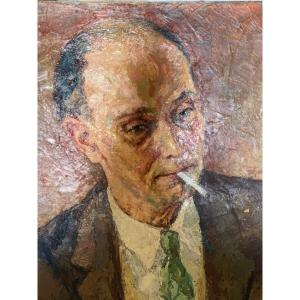

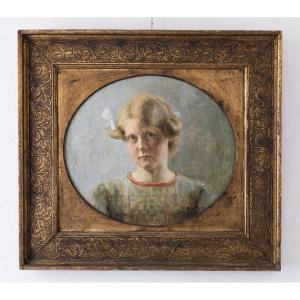
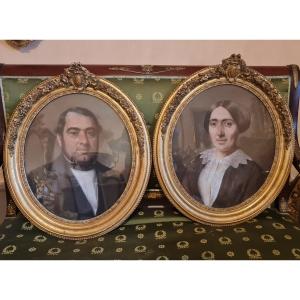

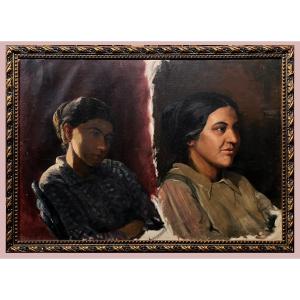




 Le Magazine
Le Magazine Rivista Artiquariato
Rivista Artiquariato TRÉSORS magazine
TRÉSORS magazine
